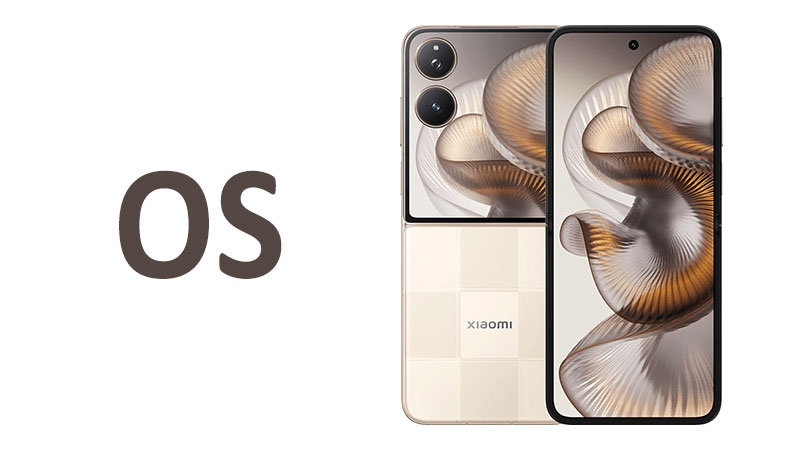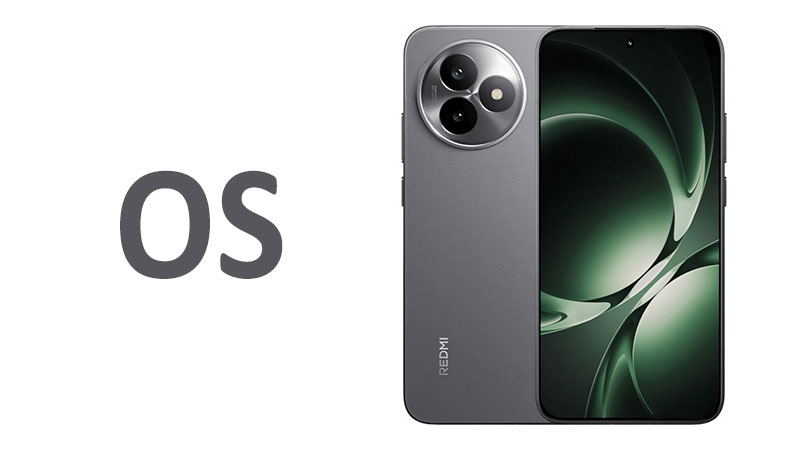The smartphone landscape is constantly evolving. In this dynamic environment, the Google Pixel series has carved out a unique identity. It stands out by offering a pure, unadulterated Android experience. This experience is elevated by Google’s own hardware and a heavy dose of AI-powered features. The latest iteration, the Google Pixel 10, takes this philosophy to new heights. At its core is the Google Pixel 10 OS: Android 16, a major software upgrade that promises to redefine how we interact with our phones.
This article will provide a comprehensive and complete analysis of the Google Pixel 10 OS, Android 16. We will explore its key features, compare it to previous versions, and discuss the immense value it brings to users. From advanced security protocols to revolutionary productivity tools, the Pixel 10 and Android 16 are a powerful combination. It’s an ecosystem designed for seamless, intelligent, and long-lasting performance.
A New Era of Software Support: 7 Years of Updates
One of the most significant announcements for the Pixel 10 is its incredible software support. Google has committed to providing seven years of OS and security updates. This is a game-changer for the smartphone market. It means the Pixel 10, running on Android 16, will receive major Android upgrades all the way up to Android 23. This level of long-term support is unmatched by many competitors. It ensures your device remains secure, functional, and up-to-date for an extended period. This is an important point for any buyer to know. It protects your investment and reduces electronic waste.
Comparison with Previous Models: The Pixel 8 was the first to receive this seven-year promise. The Pixel 10 continues this trend. It solidifies Google’s commitment to user longevity. The Pixel 7 and older models, in contrast, offered shorter update cycles. This new promise makes the Pixel 10 a far more future-proof device.
Pros and Cons: The primary pro is clear: unparalleled longevity. This reduces the need for frequent upgrades. A potential con is that hardware may eventually struggle to keep up with new software features. However, Google’s new Tensor G5 chip is designed to handle this. It is built for sustained performance.
Android 16’s Key Features: A Closer Look
Android 16 is not just a cosmetic update. It introduces a suite of new features that enhance productivity, security, and user experience. The operating system is deeply integrated with Google’s latest AI advancements, powered by the Tensor G5 chipset. These features are what make the Google Pixel 10 OS truly special.
1. Advanced AI and Gemini Integration
The centerpiece of the Android 16 experience on the Pixel 10 is the deep integration of Gemini. Google’s powerful large language model is no longer just an app. It is woven into the very fabric of the operating system.
- Gemini Live: This feature provides real-time AI assistance during calls. It can transcribe conversations, translate languages, and even summarize key points. This is a significant leap forward in accessibility and convenience.
- Magic Cue: An innovative feature that uses AI to present contextual information. For example, if you receive a text with a flight number, Magic Cue can automatically display flight status updates. This is a huge time-saver.
- Writing Tools: Built into the Gboard keyboard, these tools use Gemini to rephrase text, suggest emojis, and adjust writing style. It makes communication more efficient and tailored to your needs.
Comparison with Competitors: While Samsung’s Galaxy AI offers similar tools, the integration on the Pixel 10 feels more seamless. Google’s direct control over both hardware and software allows for a more cohesive experience.
Pros and Cons: The pros are enhanced productivity and a smarter, more intuitive phone. The cons could be a slight learning curve for users unfamiliar with AI. There are also potential privacy concerns, but Google has built in new security measures to address this.
2. Enhanced Security and Privacy
Security is a top priority for Google. Android 16 on the Pixel 10 introduces several new features to protect user data.
- Advanced Protection: This is Google’s most robust security setting. It automatically blocks 2G connections, screens for unsafe websites, and provides stronger defense against sophisticated cyberattacks.
- Notification Cooldown: A simple but effective feature. When you receive multiple notifications in quick succession from the same app, the volume of subsequent alerts is automatically lowered. This reduces distractions.
- Embedded Photo Picker: The photo picker now supports cloud-based services like Google Photos. You can select images from your cloud storage without granting the app full access to your entire library. This is a major privacy enhancement.
Important points for buyers: These features provide peace of mind. The Pixel 10 is designed to be one of the most secure phones on the market. Advanced Protection is a must-have for those who prioritize digital safety.
3. Redesigned User Interface and Usability
Android 16 brings subtle but impactful design changes. The Material 3 Expressive design language is more dynamic. It features new animations and a refreshed aesthetic.
- Live Updates: This is a new class of notification. It provides real-time updates for services like food delivery or ride-sharing directly on your lock screen. This eliminates the need to constantly open the app.
- Desktop Mode: For the first time, Android 16 introduces a full-fledged desktop mode. When connected to an external display, the Pixel 10 can function like a computer. This is a fantastic feature for productivity on the go.
- Improved Accessibility: Android 16 enhances support for hearing aids. It allows users to switch to the phone’s microphone for clearer calls in noisy environments. This is a huge win for accessibility.
Pros and Cons: The pros are a more modern and intuitive interface. The new features like desktop mode and live updates are genuinely useful. The cons are minimal, but some users may prefer the classic Android look.
4. Camera and Media Enhancements
The Pixel series has always been known for its computational photography. The Pixel 10 OS takes this a step further with new camera features and media capabilities.
- Improved Video: Android 16 introduces support for the APV 422-10 Profile. This allows for high-quality video recording with better color and higher bitrates. This is a massive upgrade for videographers.
- Auracast Support: This feature uses Bluetooth LE Audio to broadcast audio to multiple devices simultaneously. You can share music with friends or listen to public broadcasts in airports or stadiums with your compatible headphones.
- Advanced Camera Tools: Features like “Auto Best Take” and “Camera Coach” use AI to help users capture perfect photos every time. “Add Me” lets you seamlessly insert a new person into an existing group photo, a feature still unique to the Pixel line.
Comparison with Previous Models: The Pixel 10’s telephoto lens and new video capabilities are a step up from the Pixel 9. The software features are also more refined.
The Google Pixel 10: Hardware and Software Synergy
The power of the Pixel 10 OS is only possible because of its custom hardware. The Google Tensor G5 chip is designed specifically to handle the AI-first features of Android 16. The chip’s Tensor Processing Unit (TPU) is optimized for machine learning tasks. This ensures features like Gemini and Magic Cue run smoothly and efficiently. This hardware-software synergy is what separates the Pixel from other Android phones. It allows for an experience that is fast, smart, and responsive.
Conclusion: Is the Google Pixel 10 and Android 16 Worth It?
The Google Pixel 10, with its groundbreaking Android 16 operating system, represents a significant leap forward. It is not just about a faster processor or a better camera. It’s about a complete re-imagining of the smartphone experience. The seven-year software support promise alone makes it a compelling choice for anyone looking for a long-term investment.
The deep AI integration with Gemini makes the phone feel truly intelligent and proactive. Features like Live Updates and Desktop Mode enhance daily usability. While some competitors may offer better raw performance, the Pixel 10 excels in its seamless user experience. It is a phone that is smart enough to anticipate your needs and powerful enough to handle anything you throw at it. For those who value a pure Android experience, cutting-edge AI, and long-term support, the Pixel 10 is the clear choice.
FAQ
How long will the Google Pixel 10 receive software updates?
The Google Pixel 10 is guaranteed to receive seven years of major Android OS and security updates. This commitment extends until Android 23.
What is the main new feature of Android 16 on the Pixel 10?
One of the most significant new features is the deep integration of Google’s Gemini AI. This powers features like Gemini Live for calls and Magic Cue for contextual information.
Can I use the Google Pixel 10 as a desktop computer?
Yes, Android 16 on the Pixel 10 introduces a new desktop mode. When connected to an external display, you can run multiple app windows, similar to a traditional desktop environment.
Does the Pixel 10’s software improve its camera?
Absolutely. The Google Pixel 10 OS includes advanced computational photography features. Tools like “Auto Best Take” and “Add Me” use AI to enhance your photos. It also supports higher-quality video formats.
What is Notification Cooldown?
Notification Cooldown is a privacy and usability feature. It automatically lowers the volume of successive notifications from the same app to reduce annoyance and distraction.


